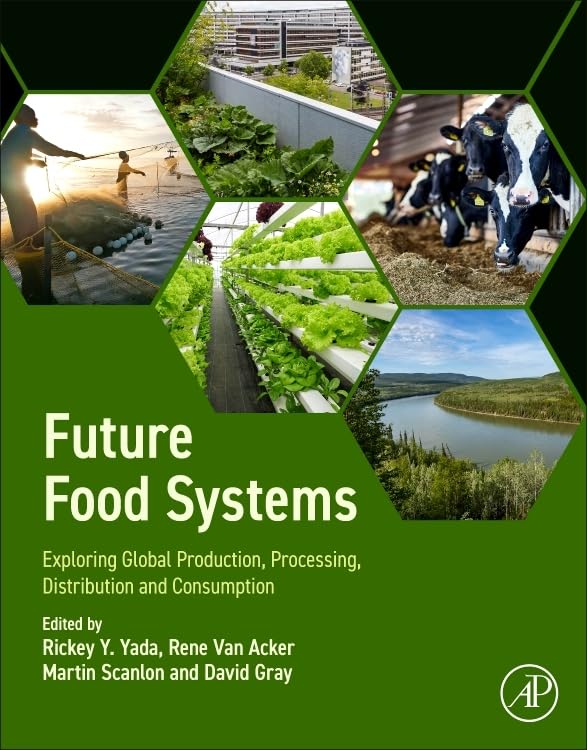Set to be released June 28, Future Food Systems: Exploring Global Production, Processing, Distribution and Consumption sets out to answer the big questions surrounding today’s food systems, its challenges, and opportunities that exist for the future.
Edited by the then-deans of four of Canada’s agricultural schools – Ricky Y. Yada from University of British Columbia, Rene Van Acker from University of Guelph, Martin Scanlon from University of Manitoba, and David Gray who was with Dalhousie University but is now provost and vice-president, academic at the University of Niagara Falls Canada – individual chapters were written by global experts in the field. A network of authors from all over the world, who are the leaders in their respective areas, share insights and put forth ideas that offer a cutting-edge and innovative approach to how the world is going to produce food moving forward.
It provides an overview of food systems, from farming through to logistics, processing, retail, service and consumption, with the intention of enabling more efficient development of policy and implementation of food-related practices.
With the United Nations predicting the world population will reach 10 billion in 2050, Gray said the editors knew they needed to pull together a book that would showcase how food would be produced in the future to meet growing demand.
“Data suggests we have to double our food production in the next 25 years to meet that need. The reality is that’s not quite right because we also need to reduce our waste. We’re very wasteful,” says Gray. “We need to find ways where we can produce more food on the same amount of land whilst minimizing our impact on the climate and also the utilization of water.”
The book presents the considerations which must be understood to develop effective and efficient policies and practices for any level of food system and along the continuum of those systems, with attention being given to the academic, public and private sector challenges, and opportunities for progress, efficiency, effectiveness, and sustainability.
Technology and the role it can play is woven throughout each of the chapters.
While the book speaks to a primarily academic audience, Gray said it will appeal to anyone engaged in agriculture from researchers and students to government agencies and environmentalists.
“This is the first book, in my experience, that pulls it all together which is one of the key things we thought was missing. There are books on plant-based agriculture, animal-based agriculture and aquaculture – but there wasn’t something that pulled food systems together in a systematic way. This book does that,” said Gray. “Some of the questions it raises are ones that needed to be asked. But at the same time, I do think it takes us, as a sector and as a community, a significant way forward in our thinking as to that 10 billion population in 2050.”

Presented in parts to highlight key aspects of the subject area, the book explores production practices including increasingly important programs in integrated farming systems, vertical agriculture and urban farming, processes, value adding for commodities, agricultural technology, supply chain innovations, and consumer considerations.
Gray said the book addresses the three big challenges in meeting the needs of a growing population, with agriculture at the centre: food production, climate change, and water.
Agriculture is all about food production, and it is the largest user of land on the planet. Those in the industry are custodians of that land and need to be thinking about how they utilize it, about deforestation, as well as the chemicals and fertilizers being used, Gray said. Fresh water is a finite resource, and the world is already facing increasing droughts. Agriculture is the largest user of water on the planet, so there is a need to explore ways to grow more food, in a clean way, with less water.
The book provides foundational insights into the underpinnings of today’s food systems, its challenges and its opportunities for the future.
It is published through Academic Press.



